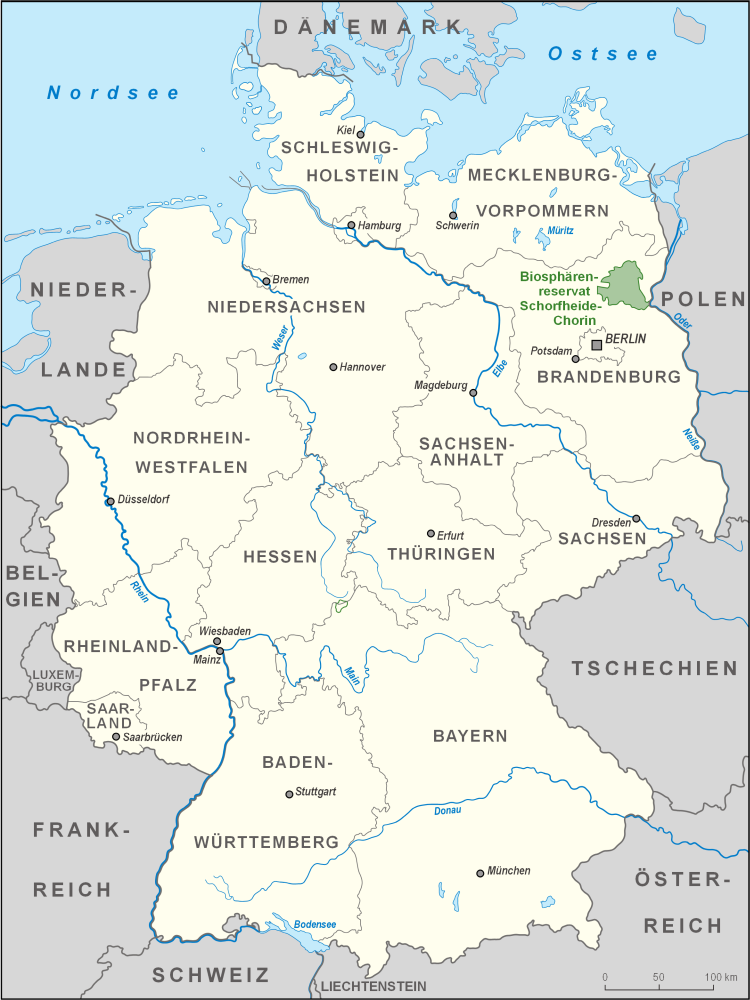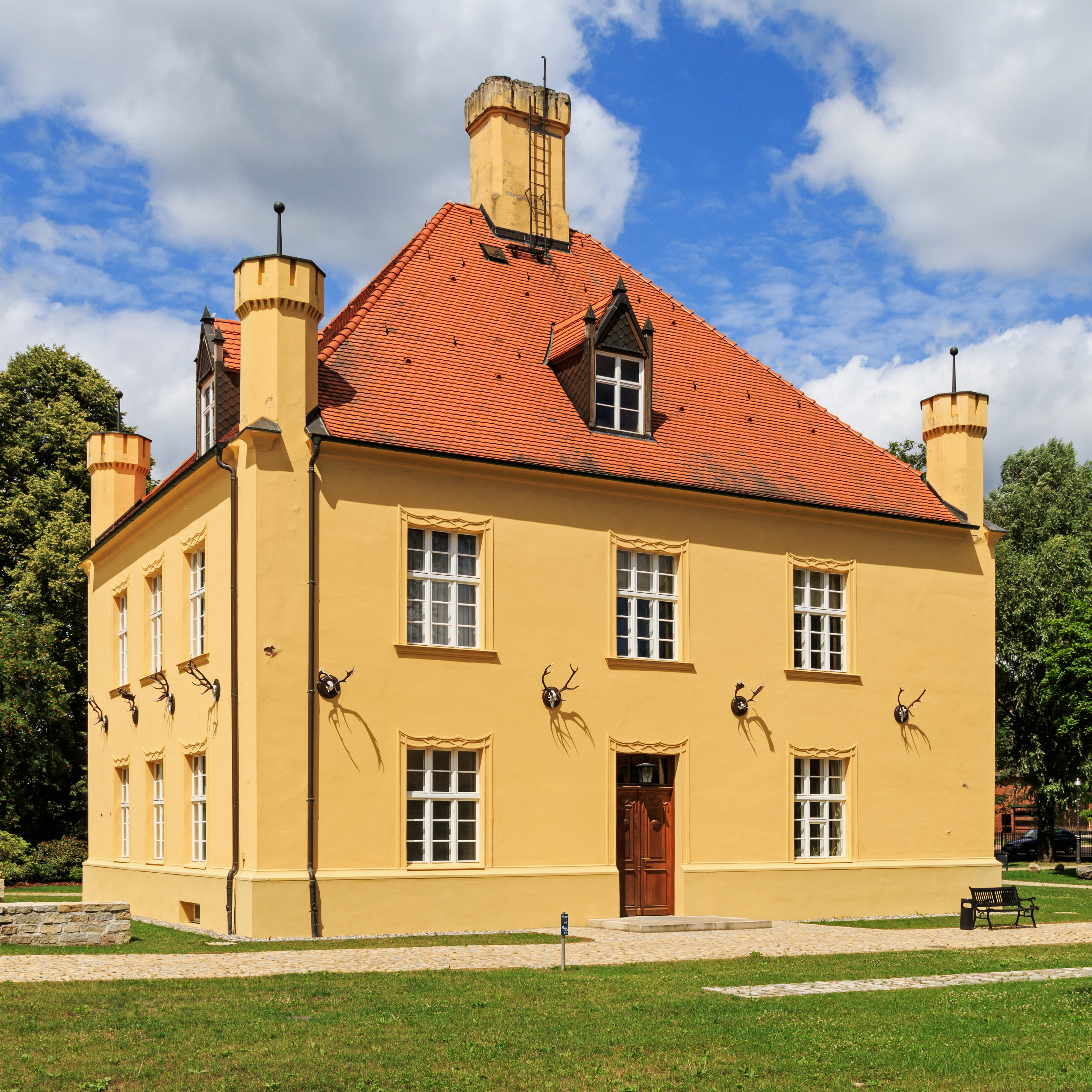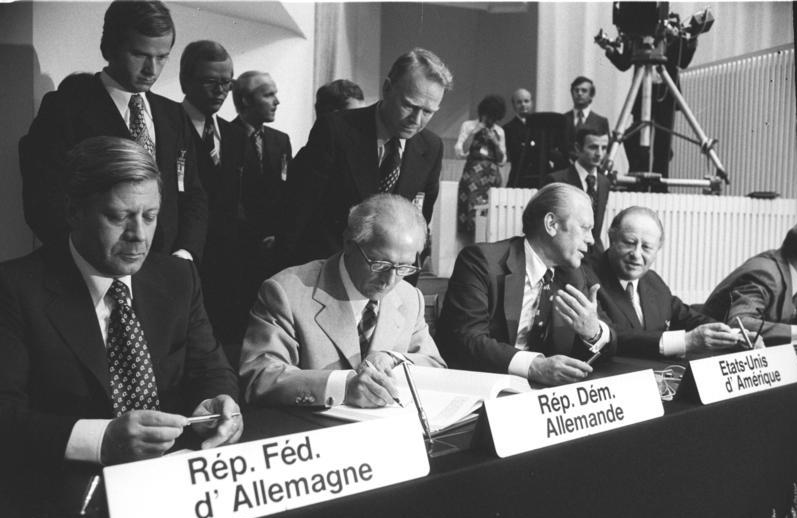|
Werbellinsee
Lake Werbellin ( German ''Werbellinsee'') is a lake in the Barnim district of Brandenburg, Germany. It is located south of Joachimsthal in the Schorfheide-Chorin Biosphere Reserve. The southern shore belongs to the Schorfheide municipality. With a surface area of it is the fourth largest lake in Brandenburg and with the second deepest (after Lake Stechlin). Overview Werbellinsee became famous for the Hubertusstock hunting lodge on its western shore, originally built in 1849, later the resort of East German leader Erich Honecker, where he received several official guests, among them West German Chancellor Helmut Schmidt in December 1981. The eastern shore near the village of Altenhof was the site of a large Young Pioneer camp (''Pionierrepublik Wilhelm Pieck''). Today the lake is a popular destination for yachtsmen and the site of several sailing regattas. It is navigable and connected with the Oder river and the Baltic Sea. The northern shore offers winding roads with few traffi ... [...More Info...] [...Related Items...] OR: [Wikipedia] [Google] [Baidu] |
Joachimsthal, Brandenburg
is a small town in the district of Barnim, in Brandenburg, Germany. It is situated within the Schorfheide-Chorin Biosphere Reserve on the isthmus between the lakes Grimnitzsee in the north and Werbellinsee in the south, about northwest of the district's capital Eberswalde and northeast of the Berlin city centre. The municipality is the administrative seat of the ''Amt'' ("collective municipality") Amt Joachimsthal. History Joachimsthal was founded in 1601 by Elector Joachim III Frederick of Brandenburg at the foot of medieval Grimnitz Castle and received town privileges in 1604. The Elector had a glass foundry erected and in 1607 established a boarding school, the Joachimsthalsches Gymnasium, that was relocated to Berlin after its devastation in 1636 during the Thirty Years' War. After a blaze in 1814, the church and several houses were rebuilt according to plans by Karl Friedrich Schinkel. King Frederick William IV of Prussia had the Hubertusstock hunting lodge erected on ... [...More Info...] [...Related Items...] OR: [Wikipedia] [Google] [Baidu] |
Landkreis Barnim
Barnim () is a district in Brandenburg, Germany. It is bounded by (from the east and clockwise) Poland, the district of Märkisch-Oderland, the city state of Berlin and the districts of Oberhavel and Uckermark. History The name "Barnim" emerged in the 13th century and was applied to a large forest region east of the Havel and north of the Spree on the homonymous plateau, where noblemen used to hunt. The present district is roughly identical with, but somewhat smaller than this historical region. The district was established in 1993 by merging the former districts of Bernau and Eberswalde. Geography Barnim extends from the Oder River to the outskirts of Berlin. The Oder River forms the eastern border. From here the Oder Havel Canal (connecting Oder and Havel) and the historical Finow Canal lead westwards to Eberswalde and beyond. The portions north of these artificial waterways are called Schorfheide. This is a forest region with several large lakes, e.g. Werbellinsee (8&nb ... [...More Info...] [...Related Items...] OR: [Wikipedia] [Google] [Baidu] |
Grimnitzsee
Grimnitzsee () is a lake in Landkreis Barnim, Brandenburg, Germany. At an elevation of 64 m, its surface area is 7.8 km². It is situated in the municipality of Joachimsthal. See also *Werbellinsee Lake Werbellin ( German ''Werbellinsee'') is a lake in the Barnim district of Brandenburg, Germany. It is located south of Joachimsthal in the Schorfheide-Chorin Biosphere Reserve. The southern shore belongs to the Schorfheide municipality. With ... External links * * Lakes of Brandenburg Barnim {{Brandenburg-geo-stub ... [...More Info...] [...Related Items...] OR: [Wikipedia] [Google] [Baidu] |
Barnim
Barnim () is a district in Brandenburg, Germany. It is bounded by (from the east and clockwise) Poland, the district of Märkisch-Oderland, the city state of Berlin and the districts of Oberhavel and Uckermark. History The name "Barnim" emerged in the 13th century and was applied to a large forest region east of the Havel and north of the Spree on the homonymous plateau, where noblemen used to hunt. The present district is roughly identical with, but somewhat smaller than this historical region. The district was established in 1993 by merging the former districts of Bernau and Eberswalde. Geography Barnim extends from the Oder River to the outskirts of Berlin. The Oder River forms the eastern border. From here the Oder Havel Canal (connecting Oder and Havel) and the historical Finow Canal lead westwards to Eberswalde and beyond. The portions north of these artificial waterways are called Schorfheide. This is a forest region with several large lakes, e.g. Werbellinsee (8&nb ... [...More Info...] [...Related Items...] OR: [Wikipedia] [Google] [Baidu] |
Schorfheide-Chorin Biosphere Reserve
The Schorfheide-Chorin Biosphere Reserve, often shortened to Schorfheide, is a biosphere reserve in the German State of Brandenburg near the Polish border. The reserve was established on 1 October 1990 following the German Reunification and is under the protection of the UNESCO Man and Biosphere Reserve Programme. It stretches over the German districts of Barnim, Uckermark, Märkisch-Oderland and Oberhavel and incorporates an area of . Notable towns are Eberswalde, Joachimsthal and Friedrichswalde. The core area of the reserve is formed by the Schorfheide forest, one of the largest cohesive woodlands in Germany. History From the Early Middle Ages until the period of the Thirty Years' War, the area fell under the responsibility of the cloister of Chorin which led to a cultivation of suitable spaces. Forest clearances took place for the sake of producing weapons for the Prussian army, but the woods were usually afforested. Large parts of the woodland were left untouched as hunt ... [...More Info...] [...Related Items...] OR: [Wikipedia] [Google] [Baidu] |
Schorfheide (municipality)
Schorfheide is a municipality in the Barnim district of Brandenburg, Germany. It was established in 2003 by the merger of ''Finowfurt'' and ''Groß Schönebeck''. Overview Schorfheide further comprises the villages of ''Altenhof, Böhmerheide, Eichhorst, Klandorf, Lichterfelde, Schluft'' and ''Werbellin''. It is situated immediately west of the district's capital Eberswalde and about northeast of the Berlin city centre. Schorfheide is the largest municipality of Barnim by area. Large parts belong to the Schorfheide-Chorin Biosphere Reserve. In the 13th century the Ascanian margraves of Brandenburg built a castle at the southern end of the Werbellinsee. In 1879 Prince Charles of Prussia had the Ascania Tower erected at the site. Groß Schönebeck houses a hunting lodge erected from 1680 at the behest of the Brandenburg Elector Frederick William I of Hohenzollern, now a museum. From 1950 until 1989 Altenhof was the site of the ''Pionierrepublik Wilhelm Pieck'', a large camp of the ... [...More Info...] [...Related Items...] OR: [Wikipedia] [Google] [Baidu] |
Young Pioneer Camp
Young Pioneer camp (russian: Пионерский лагерь) was the name for the vacation or summer camp of Young Pioneers. In the 20th century these camps existed in many socialist countries, particularly in the Soviet Union. The Young Pioneer camps of the Soviet Union were the place of vacation for children from the Young Pioneer organization of the Soviet Union during summer and winter holidays. History The first All-Union Young Pioneer camp, Artek was formed on June 16, 1925. The Young Pioneer camp phenomenon grew in popularity and in 1973 approximately forty thousand Young Pioneer camps existed in the USSR. In that year, approximately 9,300,000 children had vacations in these camps. There were different types of camps: sanitation camps, sports camps, tourist camps, thematic camps (for young technicians, young naturalists, young geologists and children of other potential careers). Generally speaking if parents wanted their child or children to go to one of the ... [...More Info...] [...Related Items...] OR: [Wikipedia] [Google] [Baidu] |
Helmut Schmidt
Helmut Heinrich Waldemar Schmidt (; 23 December 1918 – 10 November 2015) was a German politician and member of the Social Democratic Party of Germany (SPD), who served as the chancellor of West Germany from 1974 to 1982. Before becoming Chancellor, he served as the minister of defence (1969–1972) and the minister of finance (1972–1974) in the government of Willy Brandt. In the latter role he gained credit for his financial policies. He had also briefly been Minister of Economics and as acting Foreign Minister. As Chancellor, he focused on international affairs, seeking "political unification of Europe in partnership with the United States" and issuing proposals that led to the NATO Double-Track Decision in 1979 to deploy US Pershing II missiles to Europe. He was an energetic diplomat who sought European co-operation and international economic co-ordination and was the leading force in creating the European Monetary System in 1978. He was re-elected chancellor in 1976 and ... [...More Info...] [...Related Items...] OR: [Wikipedia] [Google] [Baidu] |
Glacial Lakes Of Germany
A glacial period (alternatively glacial or glaciation) is an interval of time (thousands of years) within an ice age that is marked by colder temperatures and glacier advances. Interglacials, on the other hand, are periods of warmer climate between glacial periods. The Last Glacial Period ended about 15,000 years ago. The Holocene is the current interglacial. A time with no glaciers on Earth is considered a greenhouse climate state. Quaternary Period Within the Quaternary, which started about 2.6 million years before present, there have been a number of glacials and interglacials. At least eight glacial cycles have occurred in the last 740,000 years alone. Penultimate Glacial Period The Penultimate Glacial Period (PGP) is the glacial period that occurred before the Last Glacial Period. It began about 194,000 years ago and ended 135,000 years ago, with the beginning of the Eemian interglacial. Last Glacial Period The last glacial period was the most recent glacial period wi ... [...More Info...] [...Related Items...] OR: [Wikipedia] [Google] [Baidu] |
Federal Waterways In Germany
Federal or foederal (archaic) may refer to: Politics General *Federal monarchy, a federation of monarchies *Federation, or ''Federal state'' (federal system), a type of government characterized by both a central (federal) government and states or regional governments that are partially self-governing; a union of states * Federal republic, a federation which is a republic * Federalism, a political philosophy * Federalist, a political belief or member of a political grouping *Federalization, implementation of federalism Particular governments *Federal government of the United States **United States federal law **United States federal courts * Government of Argentina * Government of Australia *Government of Pakistan *Federal government of Brazil *Government of Canada *Government of India *Federal government of Mexico * Federal government of Nigeria * Government of Russia *Government of South Africa *Government of Philippines Other *''The Federalist Papers'', critical early arguments ... [...More Info...] [...Related Items...] OR: [Wikipedia] [Google] [Baidu] |
Baltic Sea
The Baltic Sea is an arm of the Atlantic Ocean that is enclosed by Denmark, Estonia, Finland, Germany, Latvia, Lithuania, Poland, Russia, Sweden and the North and Central European Plain. The sea stretches from 53°N to 66°N latitude and from 10°E to 30°E longitude. A marginal sea of the Atlantic, with limited water exchange between the two water bodies, the Baltic Sea drains through the Danish Straits into the Kattegat by way of the Øresund, Great Belt and Little Belt. It includes the Gulf of Bothnia, the Bay of Bothnia, the Gulf of Finland, the Gulf of Riga and the Bay of Gdańsk. The " Baltic Proper" is bordered on its northern edge, at latitude 60°N, by Åland and the Gulf of Bothnia, on its northeastern edge by the Gulf of Finland, on its eastern edge by the Gulf of Riga, and in the west by the Swedish part of the southern Scandinavian Peninsula. The Baltic Sea is connected by artificial waterways to the White Sea via the White Sea–Baltic Canal and to the German ... [...More Info...] [...Related Items...] OR: [Wikipedia] [Google] [Baidu] |
Oder
The Oder ( , ; Czech, Lower Sorbian and ; ) is a river in Central Europe. It is Poland's second-longest river in total length and third-longest within its borders after the Vistula and Warta. The Oder rises in the Czech Republic and flows through western Poland, later forming of the border between Poland and Germany as part of the Oder–Neisse line. The river ultimately flows into the Szczecin Lagoon north of Szczecin and then into three branches (the Dziwna, Świna and Peene) that empty into the Bay of Pomerania of the Baltic Sea. Names The Oder is known by several names in different languages, but the modern ones are very similar: English and ; Czech, Polish, and , ; (); Medieval Latin: ''Od(d)era''; Renaissance Latin: ''Viadrus'' (invented in 1534). Ptolemy knew the modern Oder as the Συήβος (''Suebos''; Latin ''Suevus''), a name apparently derived from the Suebi, a Germanic people. While he also refers to an outlet in the area as the Οὐιαδούα ''Oui ... [...More Info...] [...Related Items...] OR: [Wikipedia] [Google] [Baidu] |






